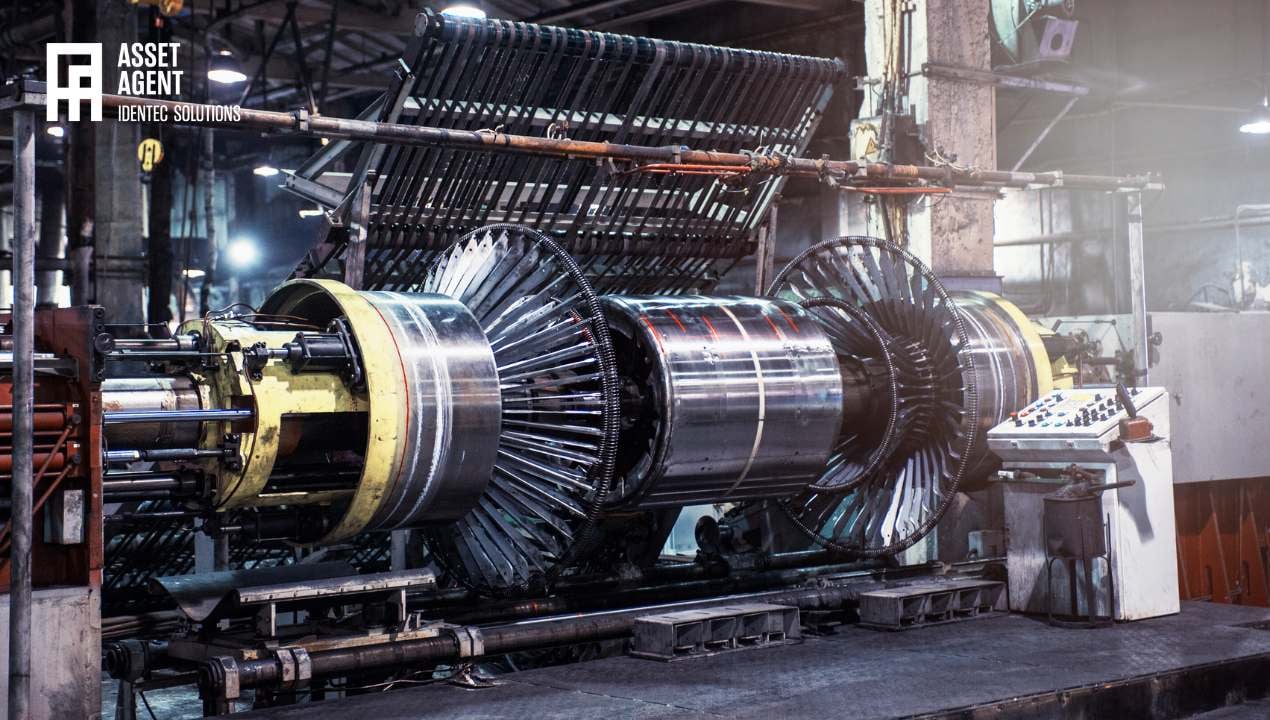Green tire and the complex road to get one
| Written by Mark Buzinkay
We interviewed our customers during factory visits to learn more about how a green tire is produced. A green tire is a semi-finished product before curing and not necessarly an ecological product.
Learn more about this complex product and read on!

Tire technology today is a perfect fusion of chemistry, physics, and engineering that guarantees unparalleled levels of comfort, performance, efficiency, reliability, and safety. Each tire is custom-designed to meet the specific demands and performance requirements set by the manufacturer of a particular vehicle model.
The tire design process commences with a computer program that translates the specific requirements of the vehicle into detailed specifications. A prototype tire is then developed and thoroughly tested to ensure that it can provide the desired performance characteristics. Designing a tire that is tailored to a particular vehicle typically involves months of testing, assessment, and quality checks conducted by both the tire manufacturer and the vehicle maker. Only after passing these rigorous tests and evaluations will the vehicle maker commit to placing an order.
Manufacturing a tire - the materials
The tire manufacturing process starts by carefully selecting different types of rubber, combined with special oils, carbon black, pigments, antioxidants, silica, and other additives to achieve the desired tire characteristics:
Rubber: The process of extracting rubber from specially grown trees in large plantations involves harvesting the milky fluid, known as latex, which coagulates upon the addition of acid. The resulting product is then cleaned with water and pressed into solid bales for convenient transportation and storage.
Steel: High-strength steel is provided by the steel industry to serve as the foundation material for the production of steel belts (steel cord) and bead cores (steel wire).
Chemicals: The tire manufacturing process relies heavily on the chemical industry, which supplies essential materials such as synthetic rubber and additives that enhance tire performance, durability, and safety. These materials help to reduce wear, improve grip, and increase the lifespan of the tire, ensuring optimal performance for drivers.
Synthetic rubber: The rubber manufacturing process involves sectioning bales of natural and synthetic rubber into portions, carefully mixing them with other ingredients according to precise recipes, and weighing them to ensure accuracy. Modern passenger car tires can contain up to twelve different rubber compounds, each serving a specific purpose in achieving optimal performance and safety.
Textiles: The tire industry relies on the textile sector for base materials such as rayon, nylon, polyester, and aramid fibers, which are used in the production of cords that serve as reinforcement in tires.
To achieve optimal performance and safety, separate compounds are utilized for different parts of the tire. These compounds are then expertly blended together using a computer-controlled machine called a banbury mixer, resulting in a homogenized batch of black material with the consistency of gum. The compounded materials are then sent to machines for further processing into the specific components required for the tire, such as the sidewalls, treads, or other essential parts.
Manufacturing of the green tire components
Steel cord. The steel cord, pre-treated and supplied on wire spools, is fed into a calendar where it is carefully embedded in one or more layers of rubber. This results in a seamless sheet of cord and rubber, which is then expertly cut at a specific angle and length according to the tire size, before being rolled up for further processing.
Tread. After being blended in a mixer, the rubber material is ready to be molded into the tread. Using a screw-type extruder, the rubber is shaped into a continuous strip of tread, which is then cooled and cut to the appropriate length for the tire size. To ensure the tread meets quality standards, its weight is checked and verified before moving on to the next stage of production.
Textile cord. Numerous threads of various textiles are introduced into the calendar through a large roller device and are firmly embedded in a thin layer of rubber. The resulting never-ending sheet is then cut to the required width perpendicular to the direction of motion before being rewound for additional processing.
Steel bead. The bead core is composed of multiple circular steel wires, each coated with its own layer of rubber. A rubber apex is then added to complete the loop.
Sidewall. The sidewall of a tire is a crucial component that provides the necessary stiffness, strength, and support to ensure safe and comfortable driving. To create the sidewall, the tire building machine uses an extruder, a machine that forces rubber through a shaped die to create a continuous, uniform shape. The extruder is programmed to cut precise sections of rubber to suit the particular tire size, ensuring a perfect fit and optimal performance. The sidewall is then cooled and cut to size before being added to the rest of the tire components. With its unique design and precise manufacturing process, the sidewall is an essential part of the tire that helps maintain its structural integrity and ensures a smooth ride on any road surface.
Inner liner. Using a specialized machine called a calendar, the inner liner is formed into a thin, wide layer that is airtight and resistant to moisture and air penetration.
Building the green tire
The tire building process kicks off with the intricate process of assembling the tire, bringing together the various semi-finished products on the tire building machine to create a "green tire" that is perfectly tailored to meet the specific demands and performance requirements set by the manufacturer of a particular vehicle model.
The initial piece of the tire building puzzle is the innerliner, a unique rubber designed to resist the infiltration of air and moisture and eliminate the need for an inner tube.
The tire's strength and flexibility are derived from the body plies and belts, typically composed of a blend of polyester and steel. The tire engineer precisely cuts the belts to a specific angle and size to achieve the desired handling and ride characteristics. To ensure an airtight fit with the wheel rim, two bronze-coated steel wire hoops are implanted into the sidewall, forming the bead.
After the body plies and belts are precisely cut and positioned, the tread and sidewalls are carefully placed over them. The parts are then firmly pressed together to create an uncured or "green" tire, ready for the next step in the manufacturing process.
Curing the tire and quality control
The tire's transformation is complete after undergoing the curing process. During this stage, the green tire is subjected to high pressure and temperature for a specified duration, resulting in its final desired shape. This process, known as vulcanization, causes the raw rubber to transform into elastic rubber, bonding the different components of the tire together. The tire identification information and tread pattern are also imprinted onto the tire through the use of specialized molds, giving it a unique and identifiable appearance.
After the curing process, each tire undergoes a thorough inspection, and random samples are taken from the line for testing. These samples may be x-rayed, cut apart to look for any flaws, or run on test wheels or road-tested to evaluate their handling, mileage, and traction performance. Such rigorous quality control checks ensure that every tire meets the required standards before being shipped to the distribution warehouse.
Once the tires have passed the rigorous quality control checks and inspections, they are carefully packaged and sent to the distribution warehouse, ready to be shipped out to drivers around the world.
The most important ingredient: rubber
The amount of rubber needed to produce a green tire depends on the size and type of tire. However, in general, a passenger car tire can contain between 1.5 and 2 kilograms (3.3 to 4.4 pounds) of natural rubber, while a truck tire can contain up to 50 kilograms (110 pounds) or more of rubber.
Some eco-tires may use more natural rubber and less synthetic rubber, while others may use different proportions of other materials to achieve the desired performance characteristics.
Overall, the amount of rubber needed to produce a green tire is an important factor in the tire's environmental impact, as the production of natural rubber can have significant environmental and social impacts in countries where it is grown. Tire manufacturers are increasingly focused on developing sustainable and responsible sourcing practices for rubber and other materials used in tire production to reduce these impacts.
Learn more about the tire industry and what sustainable development goals lie ahead.
FAQs
- What is the process of manufacturing a tire?
The process of manufacturing a tire typically involves several steps, including mixing and kneading rubber compounds, assembling the components, molding the tire, calendaring and curing the tire, and finally, performing quality control checks.
- What materials are used to make a tire?
Tires are typically made from rubber compounds, steel and synthetic materials such as nylon, polyester, and carbon black.
- What steps are involved in calendaring and curing a tire?
Calendaring a tire involves passing it through a series of rollers to form the desired shape and size while curing is done to harden the rubber compounds used in the tire.
- How can quality control be ensured during the manufacturing process?
Quality control can be ensured during the manufacturing process by performing regular inspections and tests throughout the process. Additionally, manufacturers should use the best quality raw materials and adhere to industry standards.
Takeaway
Ultimately, tires are essential components of vehicles and their effective production is an important part of today's world. Understanding how tires are made can help us appreciate how much effort goes into the manufacturing process and ensure that we are purchasing safe and reliable products. Rubber is a major component of tires and is in high demand. Saving rubber in the process is a major issue in the industry and will be the topic of our next post.



